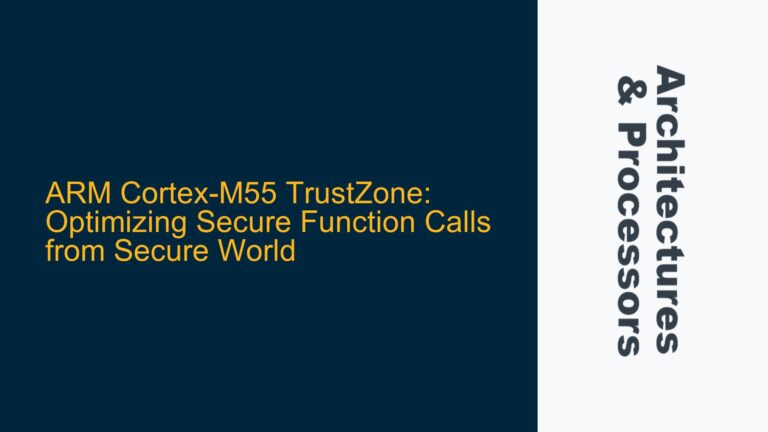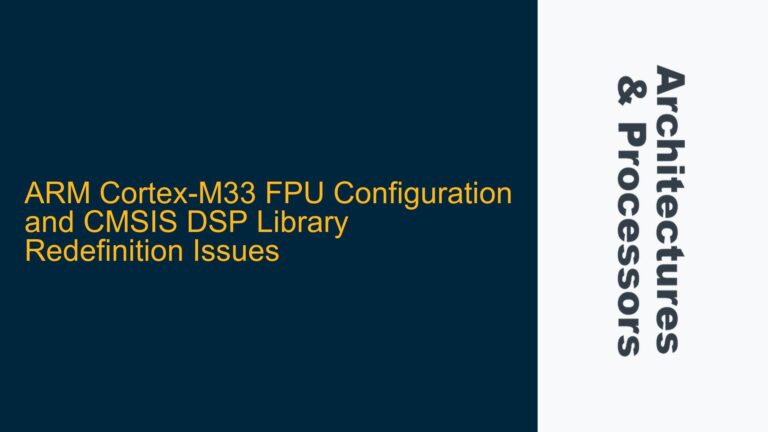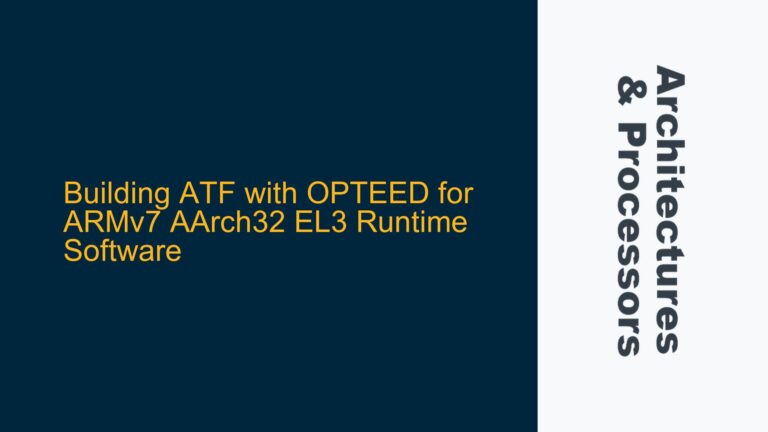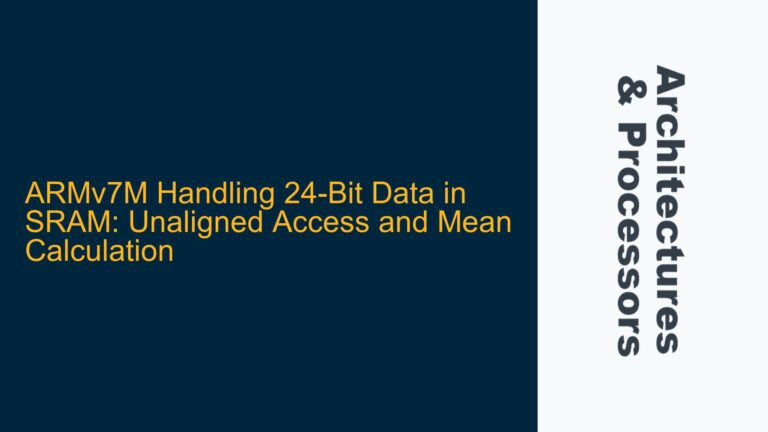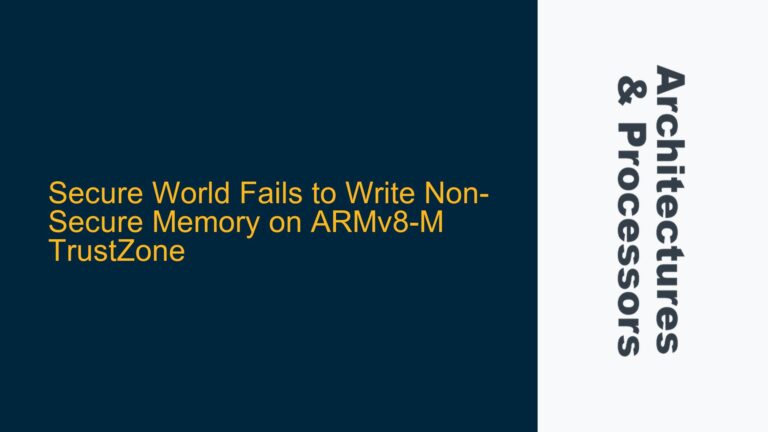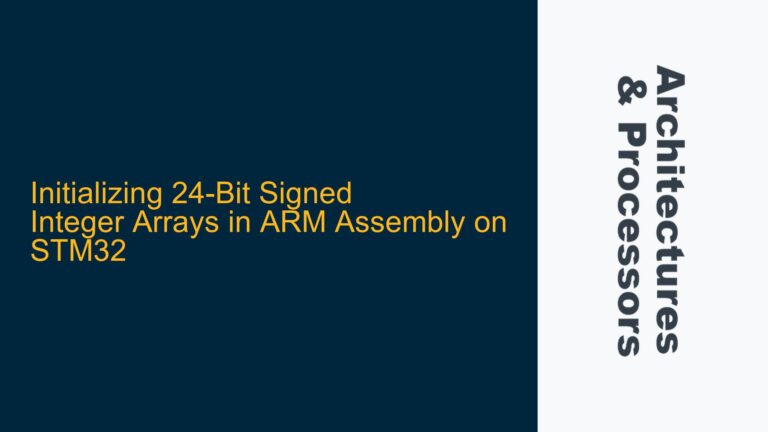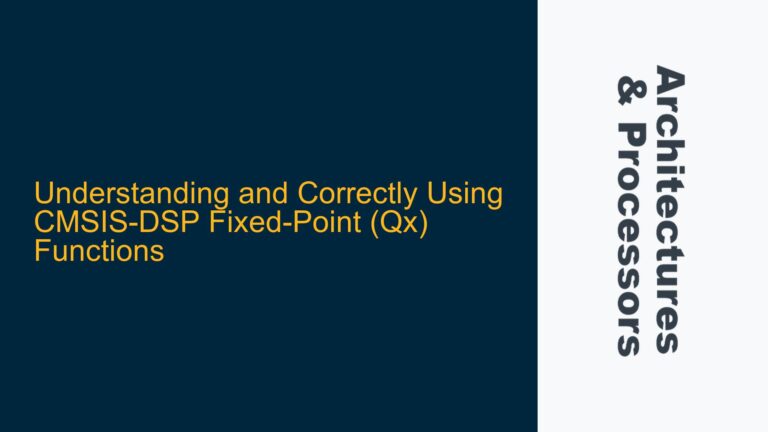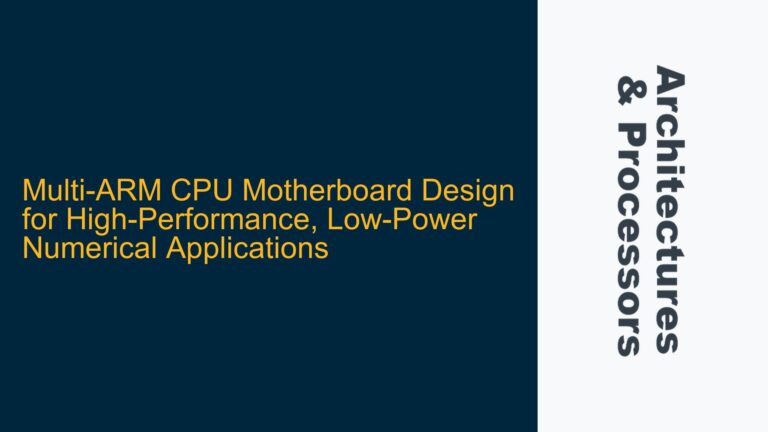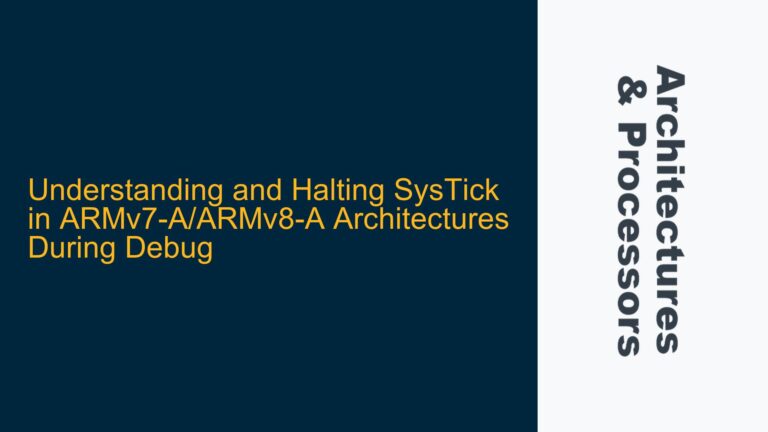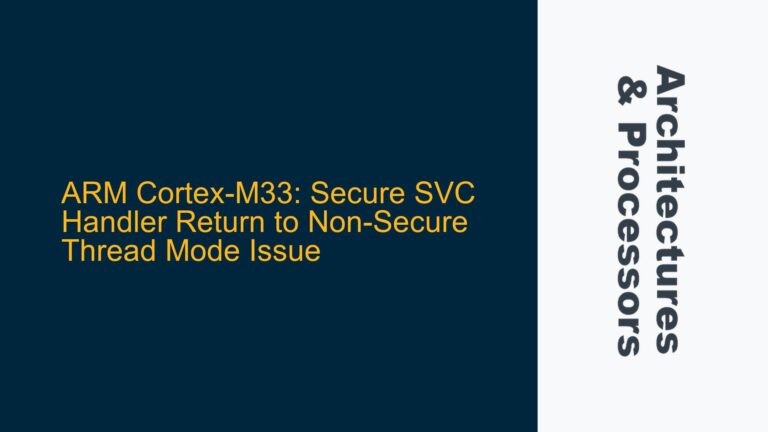ARM Cortex-M55 TrustZone: Optimizing Secure Function Calls from Secure World
ARM Cortex-M55 TrustZone Secure-to-Non-Secure Transition Overhead The ARM Cortex-M55 processor, with its TrustZone security extension, provides a robust mechanism for isolating secure and non-secure worlds. A common use case involves calling secure services from the non-secure world, which is facilitated by the cmse_ns_entry function and the BXNS instruction. However, when the same secure service is…
